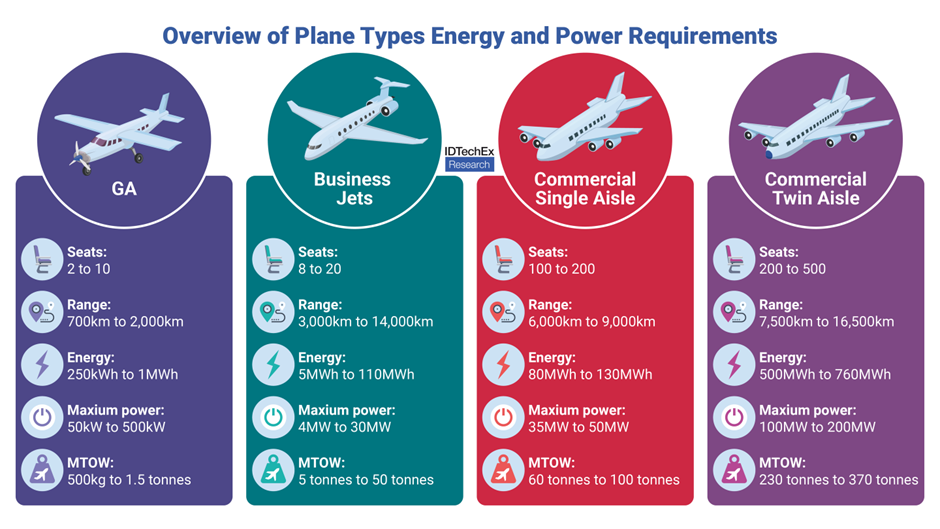The Future of Aviation Takes Flight: Electric Planes Set to Transform the Skies
The skies are on the cusp of a monumental shift, one powered not by traditional jet fuel but by electricity. It may sound like science fiction, but IDTechEx’s latest report, "Sustainable Future Aviation 2025-2045: Trends, Technologies, Forecasts", predicts that by 2045, nearly one in four planes sold will rely entirely on battery-electric propulsion. This bold vision is grounded in both innovation and necessity as the aviation industry grapples with pressing challenges related to energy efficiency, carbon reduction, and operating costs.
But the journey to electric aviation is far from smooth. The weight of batteries remains a formidable obstacle, with energy density—the amount of energy per kilogram—lagging significantly behind that of traditional aviation fuel. However, as the report highlights, there are pathways to progress, and the potential impact of electric planes is too compelling to ignore.
The Challenges: Batteries, Weight, and Sustainability
Building electric airplanes is a technical balancing act. Aviation fuel packs a punch with an energy density of 43MJ/kg (12kWh/kg), while today’s best batteries deliver only around 0.3kWh/kg—about 40 times heavier for the same energy. Electric propulsion compensates somewhat with greater efficiency, but not enough to match the range of traditional planes. Current electric aircraft experience range reductions of up to 90%.

Additionally, the heavy use of batteries in aviation shortens their lifespan, creating cost-of-ownership concerns. While electric planes save on fuel, their batteries may need frequent replacements, adding to operational expenses. Compounding these challenges is the carbon impact, which depends heavily on the local energy grid. In regions with renewable energy sources, electric planes can reduce CO2 emissions by over 90%, but in fossil fuel-dependent areas, the reduction may be closer to 56%.
Reasons for Optimism
Despite these hurdles, IDTechEx’s research uncovers promising trends. Emerging battery technologies are poised to more than double energy density, and innovative airframe designs may accommodate heavier battery loads. Improved batteries also promise longer life cycles, lowering operational costs. Additionally, as renewable energy adoption accelerates worldwide, electric planes will gain greener energy sources, further solidifying their sustainability credentials.
Even with current limitations, small electric planes are already viable for certain use cases. Two-seater aircraft with one-hour flight endurance might seem limited, but they open doors to specific applications where short, efficient flights offer real value.
Where Electric Planes Take Off
Small general aviation planes, typically seating two to four passengers, are well-suited for early adoption. These aircraft find utility in diverse roles, from island-hopping passenger services to crop dusting. Among the most compelling business cases for electrification are flight schools.
Basic pilot training often involves one-hour lessons with breaks in between—perfect for today’s electric planes. Flight schools could benefit from lower energy costs, simpler maintenance, and quieter operations, improving the overall learning environment.
Tourism is another sector primed for electrification. Aerial tours of natural wonders like the Grand Canyon or inter-island hops in remote regions are ideal for electric planes. And as battery technology improves, the potential for short-haul commercial routes will grow.
Looking Beyond Batteries
While electric planes hold tremendous promise, they won’t solve all aviation’s decarbonization challenges. Long-haul flights will likely require hydrogen or Sustainable Aviation Fuel (SAF). Hydrogen offers high energy density but presents storage challenges due to its volume, while SAF, a drop-in replacement for traditional fuels, is constrained by limited production.
The Road Ahead
IDTechEx’s report provides a comprehensive analysis of the future of sustainable aviation, examining electric and hydrogen propulsion across various aircraft categories. It envisions a future where technological breakthroughs and innovative business cases converge, redefining what it means to take to the skies.
For a closer look at the technologies shaping this exciting transformation, including free sample slides, visit www.idtechex.com/SustAviation.
As the aviation industry faces mounting pressure to reduce its environmental impact, the rise of electric planes signals a bold new era. With determination and innovation, the dream of sustainable flight is fast becoming a reality.
SOURCE: Dr. James Jeffs, Principal Technology Analyst at IDTechEx
